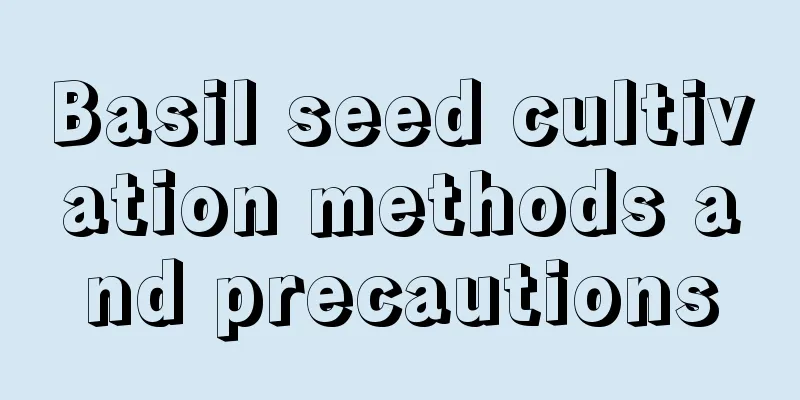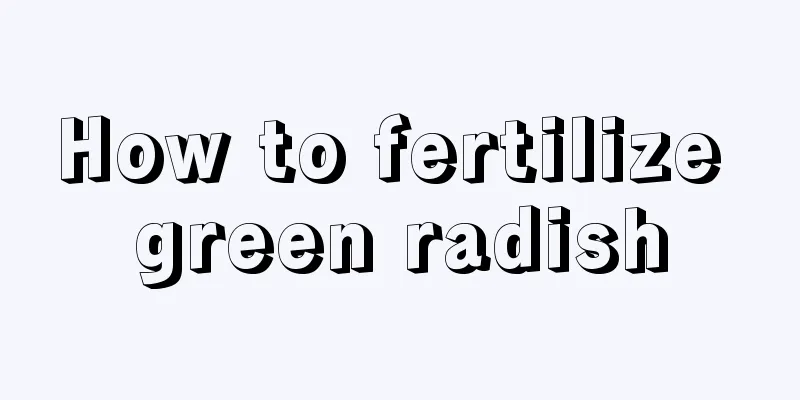Basil seed cultivation methods and precautions

1. Maintenance methods1. Temperature: Basil seeds prefer a warm growing environment, and the most suitable temperature for its growth is around 15-25℃. In winter, you must pay attention to keeping warm, try to keep it indoors, and don’t put it too close to the heater. 2. Soil: It likes fertile soil. When preparing flower soil, flower lovers should try to use humus and sandy soil. Garden soil is also acceptable. You can put some vermiculite at the bottom of the flowerpot to help drainage. 3. Light: Basil seeds are a plant that likes the sun very much, so when growing them, try to place them in a sunny location. If there is a lack of light, the color of the leaves will become dull. 4. Watering: You don’t need to water it too much at normal times. It likes relatively dry soil and has strong drought resistance. Just keep the soil from being too dry at ordinary times, and spray water to keep it moist in summer. 2. Breeding techniques1. Prevent diseases and pests: Keeping the environment permeable can effectively prevent the breeding of diseases and pests. A closed environment will accelerate the production of bacteria, which is very harmful to its health. You can open windows frequently or place it outdoors for breeding. 2. Pruning and propagation: It is an annual plant. If you want to continue growing it, you need to propagate it. It is generally propagated by cuttings, so when pruning, try to pinch the top to promote the growth of side branches and facilitate later cuttings. 3. Problem diagnosis and treatment1. Yellowing: Yellowing of leaves is mostly caused by insufficient light. It is a plant that has great demand for light. Lack of light will cause the branches to be thin and the leaves to turn yellow. When this happens, you need to move it to a place with good lighting conditions in time. 2. Pests: The more common ones are aphids, thrips and snails. If the pests are not too serious, you can just use spraying water to repel the insects. Paying more attention to the ventilation of the breeding environment may reduce the harm of pests. IV. Other issues1. Toxicity: Basil seeds, whether roots, stems, leaves or their aroma, are non-toxic and can be eaten, so they can be cultivated with confidence. 2. Can it be grown indoors: Basil seeds can be grown indoors. Not only do they have a good decorative effect, but they also have the function of purifying indoor air. The flowers are also very beautiful. It is a good idea to grow a few of them at home. |
<<: Cultivation methods and precautions of goldenrod
>>: Cultivation methods and precautions of Panax notoginseng flower
Recommend
Now is the best time to fertilize, seize the opportunity to make your flower roots strong and leaves green
The main fertilizer for the fortune tree is nitro...
Principles of Planting Orchids with Hard Planting Materials
1. The principle of hard planting material Hard p...
What to do if the red lotus grows too long
The reason why red lotus grows too long environme...
If you don’t grow this kind of flower now, your summer will be wasted and it will be too late to regret!
Why grow chrysanthemums? The flowering period of ...
Can mulberry trees be planted in the yard?
Can I plant mulberry trees in my yard? Mulberry t...
Where is the best place to plant Sophora japonica?
Sophora japonica tree planting area Sophora japon...
Anthurium care methods
1. Proper shading Anthurium does not like to grow...
How to care for Lithops and make them grow fast
Lithops growth conditions Lithops prefers a clima...
Can honeysuckle be exposed to the sun in summer? How to care for it in summer
1. Can honeysuckle be exposed to the sun in summe...
How to cultivate pink succulent
The Powdery Kanthus is a succulent plant belongin...
Cream cabbage planting time and method planting technology and management
Cream cabbage planting time Cream cabbage grows v...
How to grow Spiraea hemp in the garden
1. Choose the right soil Spiraea hemp prefers fer...
Is Calla Lily suitable for a deep pot or a shallow pot?
Should Calla Lily be potted in a deep or shallow ...
Green beans planting time and method
Green beans planting time Green beans can be plan...
Pumpkin's growing environment and local conditions
Pumpkin growing environment and conditions Pumpki...









